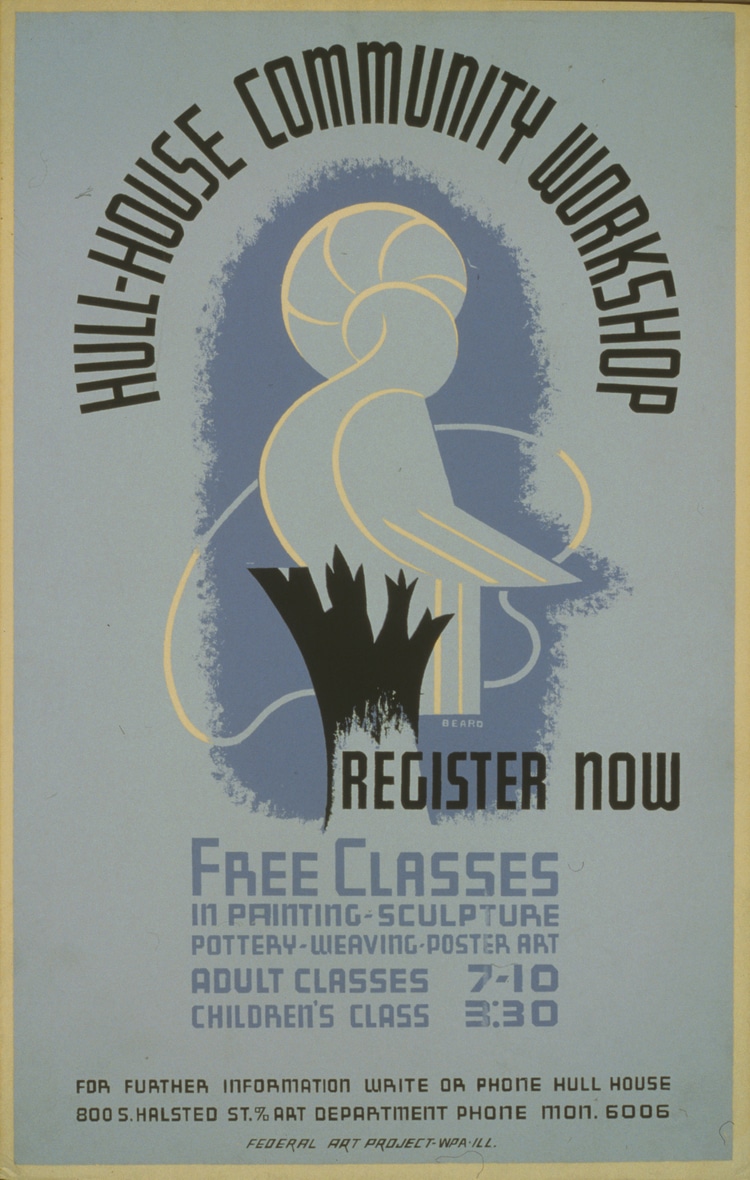Participatory Arts: The Legacy of Chicago's Hull-House Artists
Public Programs
- Jane Addams Hull-House Museum
October–November 2018

“Hull-House Community Workshop,” screen print on paper, Federal Art Project, WPA, 1938, Library of Congress
Chicago’s first public art gallery, the Butler Art Gallery, opened in 1891 as the Hull-House settlement’s first building. The Butler Art Gallery and the settlement's art programs engaged and nurtured a variety of artists and residents in the city of Chicago who also traveled internationally to France, Mexico, and other countries. In addition to advocating for fair labor, equitable housing practices and full citizenship rights for immigrants, women and children, the social reformers encouraged self-expression, community building and social change through the arts. They believed that participation and access to the arts was a fundamental part of democratic society. Art at Hull-House was a way to bridge differences and support a pluralistic society.
Participatory Arts: The Legacy of Chicago's Hull-House Artists brings together Chicago partner organizations, scholars, artists, students, and curators to explore the early work and impact of Hull-House's social reformers and artists, the settlement's rich arts programs, and their influence and networks in Chicago and beyond. Participants engage in this history with one another through public discussions, art and artifact collections, and immersive workshops at the Jane Addams Hull-House Museum. Through this multi-part program series, collaborators explore the historical and contemporary possibilities of art to incite participatory, collective, and community-engaged work.